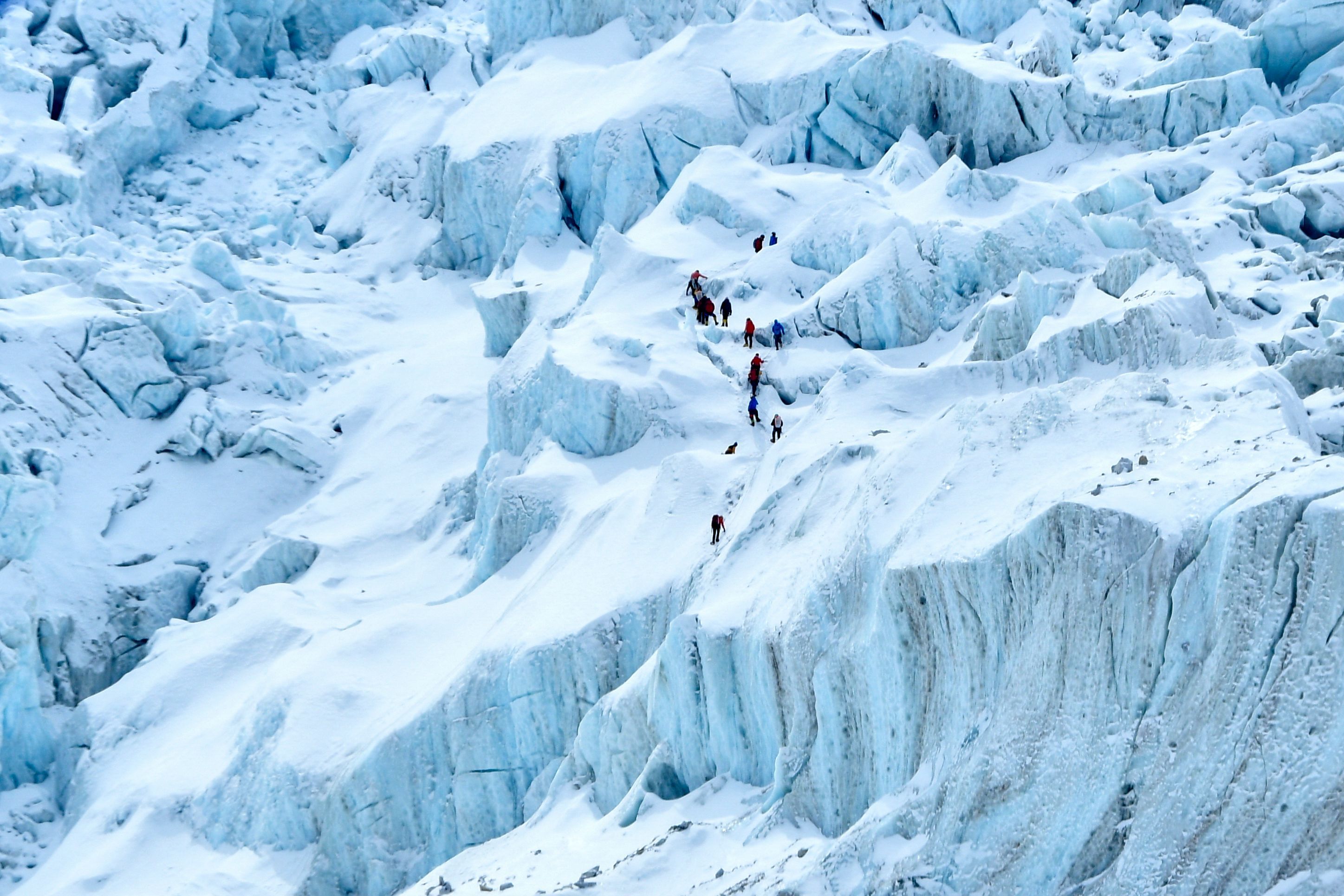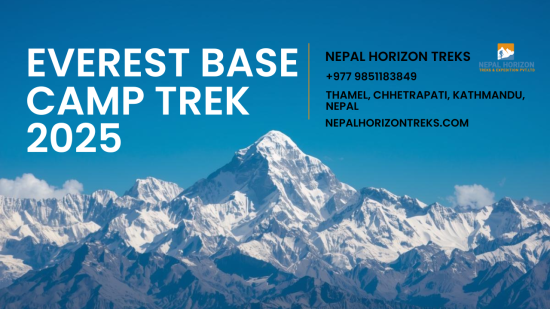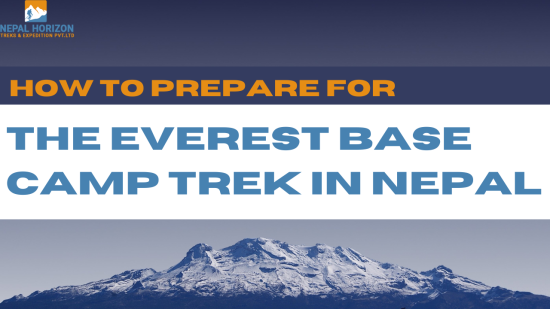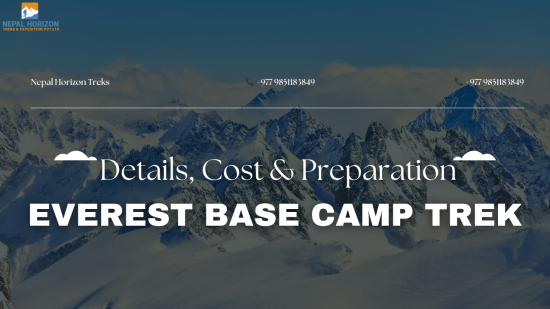10 mountain passes of Nepal
31st January 2023

Nepal is well known for its hiking because it is surrounded by the magnificent Himalayas. Mountain passes can be found in almost all trekking areas, and some trekking routes are famous for their mountain passes. A mountain pass is a passage that is used to cross a mountain, and it is referred to as "La" frequently in Nepal. It typically has a saddle-like shape and sits between mountains, dividing two isolated areas. Mountain routes have been crucial for trade and migration between Nepal and Tibet for many millennia. Mountain passes serve as entryways to basecamps in modern times, and on some trekking routes, they are the highest point that hikers can reach.
The passes make a variety of national trekking routes more difficult and adventurous. The majority of passes have flat summits and were created by glacial or river erosion. Passes offer a crucial channel that directly impacts migrations, trade, settlements, and even the outcome of battles because they are the only method to travel across the mountains. These days, mountain passes not only make it easier to walk over multiple mountain ranges, but they also offer excellent vantage points from which to take in the breathtaking scenery.
1. Cho- La pass
Cho La Pass, which is located at 5,420 m, is the middle or second of the Khumbu region's three high passes. This pass is substantially steeper and has a technical rating. To traverse this pass, you might need trekking equipment like crampons and microspikes. This pass is especially dangerous due to the rocky landscape and snowy road.
It is situated between the mountains of Cholatse (6,440 m) and Lobuche (6,119 m). You must pass through the Gokyo Valley and Ngozumpa Glacier to get here. You may get stunning views of Everest (8,848 meters), Ama Dablam (6,812 meters), Lhotse (8,516 meters), Nirekha Peak (6,151 meters), Cho Oyu (8,201 meters), and many other mountains from the pass.
2. Renjo la pass
The Renjo La Pass, the westernmost of the three high passes at 5,435 meters, maybe the simplest because there is little snow and almost no glaciers there. The trek to the pass is not particularly arduous either. From the pass, you may witness panoramic views of the nearby peaks, including Rolwaling Himal (7,181 m), Cho Oyu (8,201 m), Makalu (8,481 m), Everest (8,848 m), and Lhotse (8,516 m). You may also see the five blue Gokyo Lakes and the magnificent Gokyo Ri in addition to the mountains (5,357 m). This pass links Lumde village with Gokyo Valley. From here, trekkers can take in the expansive Himalayan mountain ranges, the Gokyo valley, and the lakes below.
3. Kongma La Pass
It is the highest and most eastern of the three passes in the Khumbu region, rising to a height of 5,535 meters. Lobuche Village in the west and Chhukung Village in the east are connected by the Kongma La Pass. The Kongma La Pass is the hardest of the three passes, although it is not being classified as technical. Because it sees a lot of snow and ice, the path to Kongma La Pass is less stable than the other passes.
The crossing offers breathtaking views of numerous mountains, including Thamserku (6,623m), Ama Dablam (6,812m), Makalu (8,481m), Lhotse (8,516m), Nuptse (7,861m), and Everest (8,848m). While descending from Kongma La Pass, one passes by the Khumbu Glacier. The classic Everest Trek's primary overnight stop, Lobuche, is located on the other side of this pass.
4. Thorong La Pass
Thorong La Pass, at 5,416 meters, is also regarded as the Annapurna gateway. The two mountains that make up this pass are Yakawa Kang (6,482 m) and Khatung Kang (6,484 m). It splits the two distinct river valleys of the Annapurna region, Marsayangdi and Kali Gandaki, while connecting Manang and Muktinath.
Stunning views of the Annapurnas (I–IV), Manaslu (8,156 m), Gangapurna (7,455 m), Dhaulagiri (8,167 m), Machhapuchhre (6,993 m), and even Langtang Lirung can be seen from the pass (7,234 m).
The Annapurna Circuit Trek's highest point is there, and the route is considered challenging. Therefore, when you summit the pass, it will be a beautiful success that you won't soon forget. You must cross the Thorong Phedi to get here. The highest pass on the renowned Annapurna Circuit, regarded as one of the best long treks in the world, connects Manang Village in the Manang District with Muktinath temple in the Mustang District.
5. Kang La Pass
The Kang La Pass, which is 5,320 meters above sea level, is situated halfway between Manang and Nar Phu Valley. Some of the mountains that can be seen from this pass include Annapurna III (7,555 m), Manaslu (8,156 m), Gangapurna (7,455 m), Tilicho (7,134 m), and Himlung (7,126 m).
You also get to witness stunning views of the Annapurna region in addition to the mountains. Compared to Thorong La Pass, it is a little bit narrower, but the views of the mountains are spectacular. You go to the top of this magnificent pass from Kang La Phedi in the Nar Phu Valley, and after crossing it, you get to Ngawal hamlet. You need a special permit to enter this restricted area that was made accessible to hikers in 2003.
6. Mesokanto La Pass
Mesokanto La Pass—also known as Tilicho Pass to many—is located northwest of Tilicho Lake in the Annapurna region. Manaslu (8,156 meters), Dhaulagiri (8,167 meters), Annapurna I (8,091 meters), and other nearby mountains may be seen from the pass in beautiful scenery.
There are many beautiful views to be had because Tilicho Lake (4,912m) is situated along the trail to this pass. Some people believe this route to be more challenging than Thorong La Pass due to its lonely approach. Trekkers reach Jomsom after passing the pass. Thus, Manang and Mustang are connected by the Mesokanto La Pass.
Trekkers typically take the conventional route, which involves returning to the main circuit trail and passing over the well-known Thorang La pass. Continue down the lake's right shore in a similar manner, crossing somewhere lower and further south to get to Jomsom immediately.
7. Sele La Pass
Sele La Pass, one of the several passes in the Kanchenjunga region, is situated at an elevation of 4,290 meters. You can complete this pass on the Kanchenjunga Basecamp Trek as well as the Kanchenjunga Circuit Trek. Since it is the most difficult pass in the area, some hikers decide against going through it.
Amazing views of the nearby mountains, including Tanga (6,433m), Mera Peak (6,364m), Yalung Kang (8,505m), Makalu (8,481m), and Kanchenjunga (8,586m), may be seen from the route. You must pass via Ghunsa village in order to get to this pass. The ascent is challenging but doable and passes through a thick juniper, rhododendron, and moss forest. The most challenging part of the Kanchenjunga Circuit walk is getting over the Selele Pass.
8. Salpa pass
Salpa Pass is a picturesque mountain pass at a height of 3,350m/10,991 ft, yet it is not the highest trekking mountain pass in Nepal. The Salpa Pass path, which follows the Arun Valley's distinctive ecosystem, is an excellent alternative for those who want to hike into the Everest mass. This trek travels along a historic trade route that people once used to transport agricultural goods to Namche Bazaar and Tibet via Nangpa-La. The Arun Valley is also home to the revered Lake Salpa Pokhari. The trip to the Salpa Pass is not difficult and offers breathtaking views of the Himalayan peaks Makalu, Mera Peak, the Everest range, and many others. Trekkers become accustomed to such magnificent scenery while perched at an unfathomable altitude above rice terraces and lush forests.
9. Lauribinayak La Pass
Lauribiinayak is one of the well-known landmarks in the Langtang area and is 4,610 meters high. Amazing views of Langtang Lirung (7,234m), Ganesh Himal (7,422m), Dorje Lakpa (6,966m), Manaslu (8,156m), Himal Chuli (7,893m), and Gosainkunda await you after you reach the pass (4,360m). You might even be able to glimpse some mountains on the Tibetan side if the sky is clear.
The Gosainkunda Lake Trek typically includes this pass, which is the trail's highest point. You cross the revered Gosainkunda Lake to get to this pass. You enter the Helambu region after passing via the Lauribinayak La Pass and travel toward Melamchi Valley. This mountain pass is comparatively shorter and simpler to complete than other mountain passes in the nation.
10. Larkya La Pass
Larkya La Pass is the highest point on the Manaslu Circuit Trek at an elevation of 5,135m. The Larkya La Pass is among the most picturesque mountain passes in Nepal, according to many trekkers. Due of the area's variable weather patterns and rocky terrain, it is regarded as difficult. Despite its difficulties, the pass consistently lives up to its reputation for offering the most stunning views.
Beautiful views of Larkya Peak (6,249 meters), Manaslu (8,156 meters), Ratna Chuli (7,128 meters), and many other mountains can be seen from the pass. Between Dharmashala (Larke Phedi) and Bhimthang, this pass is situated. Starting in Gorkha, the trail leads to Larkya La Pass. You pass through a variety of vegetation on the Larkya La Pass journey, from subtropical forests to alpine terrain and finally glacial terrain.
Conclusion
Trekking via mountain passes is substantially more difficult but offers breathtaking views. High passes also aid in understanding their significance and the contrast in the lifestyles of those who live on either end of them. Although climbing these passes requires a lot of physical effort, the vistas and experiences are well worth it. Each pass has a unique charm that offers the best views of the surroundings depending on the trekking zone. These passes are not easy to reach, but once you do, the reward for your exhaustion and struggle is the vista itself. The majority of Nepal's hiking passes are found in the Everest, Annapurna, Langtang, Kanchenjunga, Manaslu, and Dolpo regions, which offer picturesque views of the magnificent Himalayas, verdant hills, deep alpine wilderness, glacial lakes, little ethnic settlements, and many more.
Recent From Blogs

28th October 2025

25th October 2025

24th October 2025

18th October 2025

14th October 2025

12th October 2025

10th October 2025

7th October 2025






